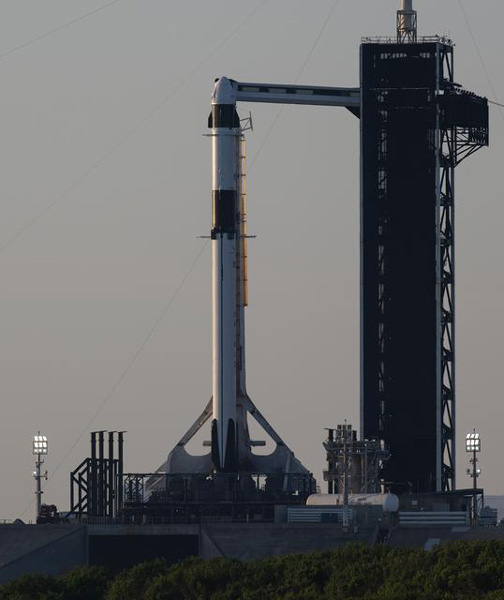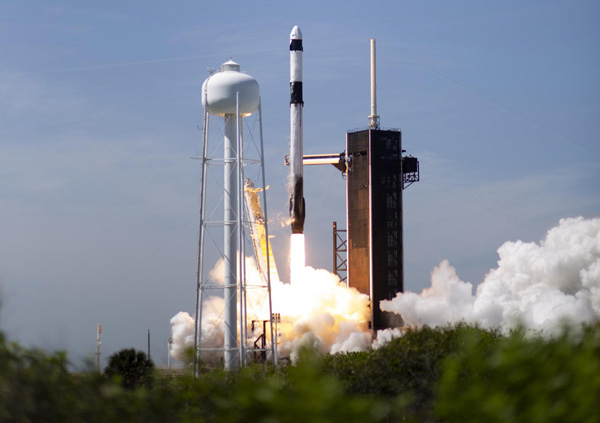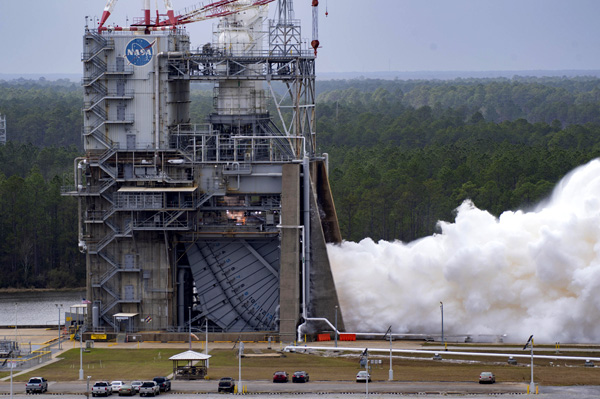 NASA / Ben Smegelsky
Kennedy Prepares Facilities, Spacecraft for Artemis II Mission (News Release - January 31)
NASA / Ben Smegelsky
Kennedy Prepares Facilities, Spacecraft for Artemis II Mission (News Release - January 31)
On the heels of a successful
Artemis I mission, NASA is focused on preparing for
Artemis II – the first crewed flight of the agency’s
Space Launch System (SLS) rocket and
Orion spacecraft that will test all of the spacecraft’s systems with astronauts aboard. Teams with Exploration Ground Systems are upgrading and modifying facilities at the agency’s Kennedy Space Center in Florida to support Artemis II, paving the way for human exploration of the Moon and Mars.
Rocco A. Petrone Launch Control Center
Launch team members are updating the
Artemis launch countdown for future missions with crew. During the countdown, teams in Firing Room 1 and 2 conduct pre-launch and liftoff activities.
Teams are updating timelines to include the crew donning spacesuits, making the trip to the launch pad, and getting into the spacecraft atop the rocket, among other activities.
Vehicle Assembly Building
Inside the Vehicle Assembly Building
(VAB), engineers are replacing the portable purge units used for Artemis I with a new environmental control system
(ECS) for crewed missions. The ECS provides air supply, thermal control and pressurization to the rocket and spacecraft during stacking operations in High Bay 3.
The work is scheduled for completion this year, followed by verification and validation tests performed by NASA and contractor Jacobs.
Launch Complex 39B
A new 1.4-million-gallon liquid hydrogen tank is under construction at Launch Complex 39B. The increased volume of liquid hydrogen onsite will help decrease the time between launch attempts.
Construction of the emergency egress system terminus area, which is used in the event of an emergency during launch countdown for astronauts to safely exit the spacecraft and launch pad area, is also underway. The emergency egress system will be similar to the system used during the Space Shuttle Program, which had baskets that rode on cables.
For Artemis missions, the cables will be deployed from the mobile launcher every time it moves to the pad, and the new basket will include new materials and increased capacity. Like the VAB, the pad ECS system is being upgraded to meet the needs of Artemis II and the new Block 1B SLS rocket for
Artemis IV and beyond.
Engineers are on track to complete construction and upgrades this year, ahead of verification and validation tests.
Mobile Launcher 1
Modifications to the mobile launcher are underway to support astronauts and emergency egress life safety systems, capabilities that were not required for the launch of the uncrewed Artemis I flight. Modifications include developing the egress path from Orion to the new emergency egress baskets and away from the mobile launcher.
The system will enable astronauts to exit Orion at the Crew Access Arm white room through the mobile launcher tower down to the emergency transportation vehicles on the ground and onward to a safe haven. Some subsystems will undergo minor improvements.
Technicians are also repairing damage sustained during the Artemis I liftoff. Engineers expect to complete modifications later this year.
Crawler-Transporter 2
Teams are in the process of modifying and upgrading the crawler-transporter 2
(CT-2). They will replace the “shoes” on the two large tracks the crawler rolls on.
The first shipment of 16 new steering cylinders have arrived and technicians will perform corrosion control on the truck’s interior. Later this year, CT-2 will transport the mobile launcher to Launch Complex 39B for testing.
Orion Processing Facility
Engineers are nearing completion of assembly, integration and testing for the Artemis II Orion crew module. The module has additional hardware required for astronauts to live in space not included on the Artemis I spacecraft, including normal and emergency communication components, display units, hand controllers, full-fidelity side and docking hatches, environmental control and life support subsystems for nitrogen, oxygen, water and air, as well as waste management, and fire detection and suppression.
Crew seats, a system for reheating and rehydrating food, and medical and exercise equipment will also be in the crew module. The crew module will undergo thermal cycle testing this spring, followed by final functional tests and acoustics testing.
Engineers have nearly completed assembly and testing for the service module. Remaining operations include installation of the spacecraft adapter cone, spacecraft separation mechanisms, and nozzle on the orbital maneuvering system engine.
Acoustics testing is also planned for this spring, and optical communication hardware will also be installed and tested.
Orion Heat Shield
Processing continues on Orion’s heat shield for Artemis II. The heat shield is projected to be ready for attachment to the crew module this spring.
Altitude Chambers
Upgrades are being made to one of two altitude chambers inside the Neil Armstrong Operations and Checkout Building high bay to support Artemis II testing. The chambers can simulate the conditions of a deep-space environment with a vacuum equivalent of approximately 200,000 feet in space.
Launch Abort System
The launch abort system motor is about 90% through assembly, integration and testing. The jettison motor has been secured to the abort motor, and the forward interstage has been attached to the attitude control motor.
Remaining operations include installing and testing electrical and development flight instrumentation harnesses, ordnance, covers and panels and conducting a functional test of the attitude control motor.
Orion Recovery
The landing and recovery team is training to safely recover astronauts and Orion after splashdown in the Pacific Ocean. Preparations include practicing scenarios with the crew module test article and conducting recovery tests off the coast of California.
After splashing down on crewed missions, astronauts will exit the capsule onto an inflatable “front porch” where they will be picked up by helicopters and flown back to the recovery ship.
Source: NASA.Gov
****
 NASA
NASA














































